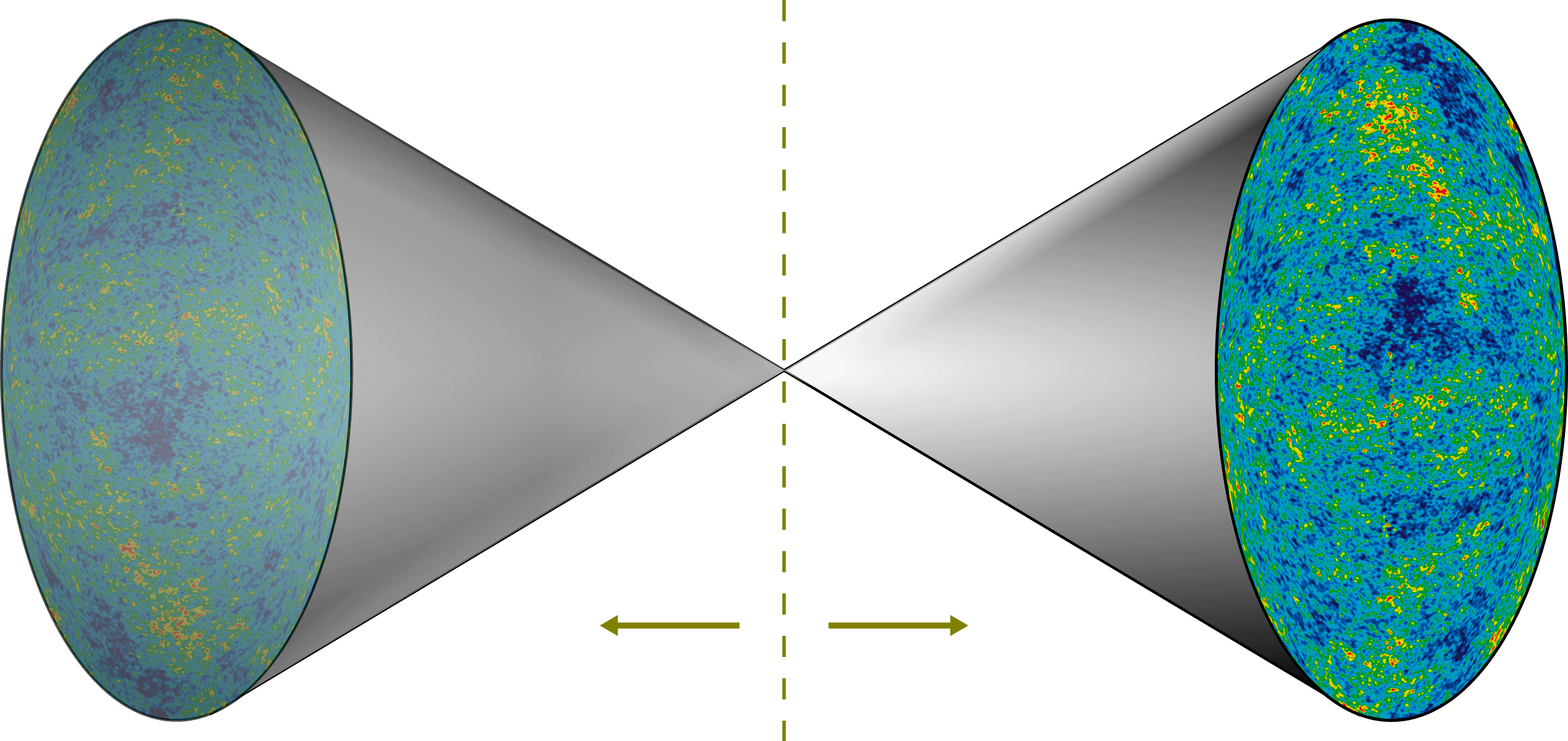10 Facts About Other Dimensions You Didn’t Know!
Unlocking Hidden Realms: Fascinating Facts About Other Dimensions
Video of the day September 1st 2018
Did you know there could be 26 dimensions in the Universe? Are you aware there’s a multidimensional universe inside your brain? Here are 10 facts you didn’t know about other dimensions!
10. Parallel universes are real
While parallel universes were once considered nothing more that science fiction, we are now discovering more and more clues that there could be more than one universe. According to the theory of “multiverse”, an infinite amount of universes, including the one we live in, exist parallel to each other. These universes have different physical properties, including multiple Big Bangs, space bubbles and maybe even an alternate version of you watching this video! While the “multiverse” hypothesis has been so far been impossible to test but has supporters among such scientists as late Stephen Hawking, Michio Kaku, Neil deGrasse Tyson and Leonard Susskind.
The latest piece of evidence that could ultimately prove the existence of a multiverse comes from the UK’s Royal Astronomical Society. In April 2017, they published a study on the so-called ‘cold spot’. The cold spot is an unusually cool patch of space seen in the radiation produced by the formation of the Universe more than 13 billion years ago. The cold spot is extremely puzzling for scientists and standard cosmology cannot explain such a giant cosmic hole. But this study proposes that the cold spot was caused by a collision between our universe and another bubble universe. If a more detailed analysis proves this to be the case then the cold spot might be taken as the first evidence for the multiverse.
9. There are 10 dimensions in the universe
You probably learned in school that there are three dimensions of space – length, width, and height – plus time as a possible fourth dimension. But according to the superstring theory, one of the leading theories today to explain the nature of our universe, there are actually 10 dimensions – that’s nine of space and one of time. So what are these other dimensions and how might we experience them? That’s a tricky question, but physicists have some idea of what it might be like. Basically, other dimensions are related to other possibilities.
At the fifth and sixth dimensions is where the notion of possible worlds arises. If we could see on through to the fifth dimension, we would see a world slightly different from our own that would give us a means of measuring the similarity and differences between our world and other possible ones. In the sixth dimension, we would see a plane of possible worlds, where we could compare and position all the possible universes that start with the same initial conditions as this one. In theory, if you could master the fifth and sixth dimension, you could travel back in time or go to different futures. In the seventh dimension, you’d have access to the possible worlds that start with different initial conditions. Whereas in the fifth and sixth, the initial conditions were the same and subsequent actions were different, here, everything is different from the very beginning of time. The eighth dimension again gives us a plane of such possible universe histories, each of which begins with different initial conditions and branches out infinitely. In the ninth dimension, we can compare all the possible universe histories, starting with all the different possible laws of physics and initial conditions. In the tenth and final dimension, we arrive at the point in which everything possible and imaginable is covered and beyond this, nothing can be imagined by humans!
8. Actually, there are 26!
If thinking about 10 dimensions hurts your brain, try imagining a universe in 26 dimensions! According to the Bosonic string theory – the original version of string theory developed in the late 1960s – there actually 25 dimensions of space and one of time!
The reason for these extra dimensions can be explained by the “Slinky” analogy. Consider a long, loose spring like a Slinky, which is flexible and elastic just like the strings of string theory. If you lay the spring in a straight line flat on the floor and pull it outward, waves move along the length of the spring. These are called longitudinal waves and are similar to the way sound waves move through the air. The key thing is that these waves, or vibrations, move only back and forth along the length of the spring. In other words, they’re one dimensional.
Now imagine that the spring stays on the floor, but someone holds each end. Each person can move the ends of the spring anywhere they want, so long as it stays on the floor. They can move it left and right, or back and forth, or some combination of the two. As the ends of the spring move in this way, the waves that are generated require two dimensions to describe the motion.
7. We might be living in a 2D hologram
Wait, forget about all those extra dimensions – there’s an equal possibility that we’re living in nothing more than a 2D hologram! The idea of a holographic universe was first suggested in the 1990s and states that all the information which makes up our 3D reality – plus time – is actually contained in a 2D surface on its boundaries. Imagine that everything you see, feel and hear in three dimensions and your perception of time comes from a flat two-dimensional field. The idea is similar to that of ordinary holograms where a three-dimensional image is encoded in a two-dimensional surface, such as in the hologram on a credit card. However, this time, the entire universe is encoded! It’s like watching a 3D film in a cinema. We see the pictures as having height, width and most importantly, depth – when in fact it all originates from a flat 2D screen.
6. There are 9 types of multiverse
Did you that there isn’t just one, but 9 different types of multiverse? This classification system was proposed by string theorist and theoretical physicist Brian Greene in his book “The Hidden Reality”. According to Greene, type one multiverse is called Quilted Multiverse and it’s probably one of the easier ones to understand since it is based on the assumption of an infinite universe and the consistency of physical laws. Basically, think of the universes as areas in an infinitely large patchwork quilt multiverse. Because the Universe is infinite then there are regions outside our cosmic horizon of the observable universe. So it’s reasonable to say that everything in our observable universe is bound to repeat at some point in time. However these separate parallel universes are so far away we will never be able to see or interact with them.
5. There’s a multi-dimensional universe inside our brains
An exciting discovery has been made by scientists who uncovered that the human brain contains structures and shapes that may have up to eleven dimensions. Experts have previously stated that our brains are estimated to contain a staggering 86 billion neurons, including several connections from each cell expanding and connecting in every possible direction producing a super-vast cellular network that somehow makes us capable of thought and consciousness. But an international team of researchers gathered around the Blue Brain project has obtained results that have never before been observed in the world of neuroscience. They managed to locate structures in the human brain that display a multi-dimensional universe, revealing the very first geometric design of neural connections and how they react to different stimuli.
Researchers used in-depth computer modeling methods in order to understand how human brain cells can adapt themselves in order to carry out extremely complex tasks. In the study, scientists observed how structures are formed at the same time that they are interlaced in a “unity” that creates a precise geometric structure and ultimately uncovered tens of millions of these objects! Every single neuron within our brain can interconnect to a nearby one to form an object with intricate connections and the more neurons join in with the group – the more dimensions are joined to the object. After researchers included stimulus into the virtual brain tissue, they discovered that in between these groups of neurons were empty spaces like holes or cavities. The presence of high-dimensional cavities when the brain is processing information indicates that the neurons in the network respond to stimuli in a remarkably organized manner. It’s as if the brain responds to a stimulus by constructing then smashing a tower of multi-dimensional blocks, starting with one dimensional rods, two-dimensional planks, 3D cubes , and then more complex geometries with 4D, 5D, and so on.
 source: Wikipedia
source: Wikipedia
4. There are multiple time dimensions
Both physicists and philosophers have considered the possibility that there might be more than one dimension of time. According to special relativity, spacetime might have several timelike directions – or multiple time dimensions – but there is no consensus regarding the relationship of these extra “times” to time as we understand it. According to one version of this theory, time isn’t linear, but a 2D plane in curvature interwoven throughout the three special dimensions.
The most exciting part of this theory is that two-dimensions of time would make time travel possible. Instead of being linear, at some point time would loop back on itself. In this way, you could travel back or forward in time. So if there are all these extra dimensions, how come we don’t experience them? In two time theory, they’re so unimaginably small that we can’t see them. We basically move through these tiny, balled up dimensions all of the time, but we never notice them. But if some time in the future we develop technology advanced enough to observe phenomena on the subatomic level, we might be able to detect these additional dimensions.
3. We can’t visualize more than 3 dimensions
If you’re not a physicist or a mathematician, the most confusing thing about other dimensions is our inability to visualize them. But have you ever wondered why it is so difficult to visualize things in more than three dimensions of space? These questions are so deeply philosophical that many scientists may not even actually consider them to be a part of exact science or even science in the first place. But at least part of the answer may be provided by what is called the weak anthropic principle which states that we see the world as it is because if the world was any different, we wouldn’t possibly have been around to observe it. In other words, we are suited to observing just 3 spatial dimensions and not 4 because creatures able to do so in some different universe would have to be so other species and not humans.
The most plausible explanation could be that seeing in more than three dimensions simply isn’t biologically useful and hasn’t been for 99.999999% of evolutionary history. Even if the capacity evolved by chance, it would be a waste of energy and would eventually disappear. The wiring of optical neurons in our brains seems optimized for a three dimensional world. What do you think: could we somehow, through intense practice, meditation, or mindfulness train ourselves to perceive the world in more than three dimensions?
2. Truth about extra dimensions is hidden in gravity
Researchers from the Max Planck Institute for Gravitational Physics in Potsdam have found that hidden dimensions – as predicted by string theory – could influence gravitational waves. Since the first ever detection of gravitational waves from a black-hole binary in September 2015, a whole new window onto the universe has opened. Now it looks like with the newest observing tools physicists are not only able to trace black holes and other exotic astrophysical objects but also understand gravity itself. Compared to the other fundamental forces like electromagnetism, gravity is extremely weak and the reason for this weakness could be that gravity interacts with more than the three dimensions in space and one dimension in time that are part of our everyday experience.
The existence of these tiny extra dimensions is a crucial part of string theory that could possibly unify quantum mechanics and general relativity. Since gravity is likely to occupy all the dimensions that exist, its waves are an especially promising way to detect any dimensions beyond the ones we know. If there are extra dimensions in the universe, then gravitational waves can walk along any dimension, even the extra dimensions. Physicists have been looking for extra dimensions at the Large Hadron Collider at CERN but up to now this search has produced no results. But gravitational wave detectors might be able to provide experimental evidence. When researchers set out to calculate how potential extra dimensions would affect observable gravitational waves, they found two peculiar effects: extra waves at high frequencies, and a modification of how gravitational waves stretch space. As gravitational waves move through a tiny extra dimension, they should generate a “tower” of extra gravitational waves with high frequencies following a regular distribution. But current observatories cannot detect frequencies that high, and most of the planned observatories also focus on lower frequencies. So while these extra waves may be everywhere, they will be hard to spot.
However, the second effect of extra dimensions might be more detectable, since it affects the “normal” gravitational waves that we observe rather than adding an extra signal. If extra dimensions are in our universe, this would stretch or shrink spacetime in a different way that standard gravitational waves would never do. As gravitational waves ripple through the universe, they stretch and squish space in a very specific way. But extra dimensions add another way for gravitational waves to make space shape shift, called a breathing mode. Like your lungs as you breathe, space expands and contracts as gravitational waves pass through, in addition to stretching and squishing. With more detectors we will be able to see whether this breathing mode is happening and gravitational waves could provide concrete proof of extra dimensions.
1. Black holes are doorways to other dimensions
Don’t let the name fool you – a black hole is more than just empty space. In fact, according to one theory, black holes could actually be the doors to other dimensions. There’s a catch though – once you pass through one of these “doors”, you may have a little trouble getting back. Scientists have previously held the theory that all matter inside of a black hole is destroyed, so there would be no way of actually making it through. Anyone who would somehow manage to get through a black hole would end up ‘spaghettified’ or stretched out like pasta. The traveler would get squished back down to size once they reached the other side, but it’s unlikely they’d make it there alive to see it.
But new research suggests that black holes could really act as a doorway. The new theory rejects the view that at the centre of a black hole, spacetime curves to an infinite point known as a ‘singularity’ and all matter is destroyed. Instead, it proposes that at the heart of the simplest type of electrically charged, non-rotating black hole is a small spherical surface which acts like a ‘wormhole’ – a doorway or tunnel through the fabric of spacetime. Now the only thing we need to figure out is how to get through without dying. Any ideas?
subscribe to the insane curiosity channel

Subscribe For the Latest news & Updates
Subscribe For the Latest news & Updates
Get in touch with the Insane Curiosity Channel. Once in while you will receive emails about news, promos, and much more. Stay Tuned!
Insane Curiosity
Science made easy
Who we are
Insane Curiosity is a channel of astronomy, physics and future technology, which easily explain science. We need science and science need us!
